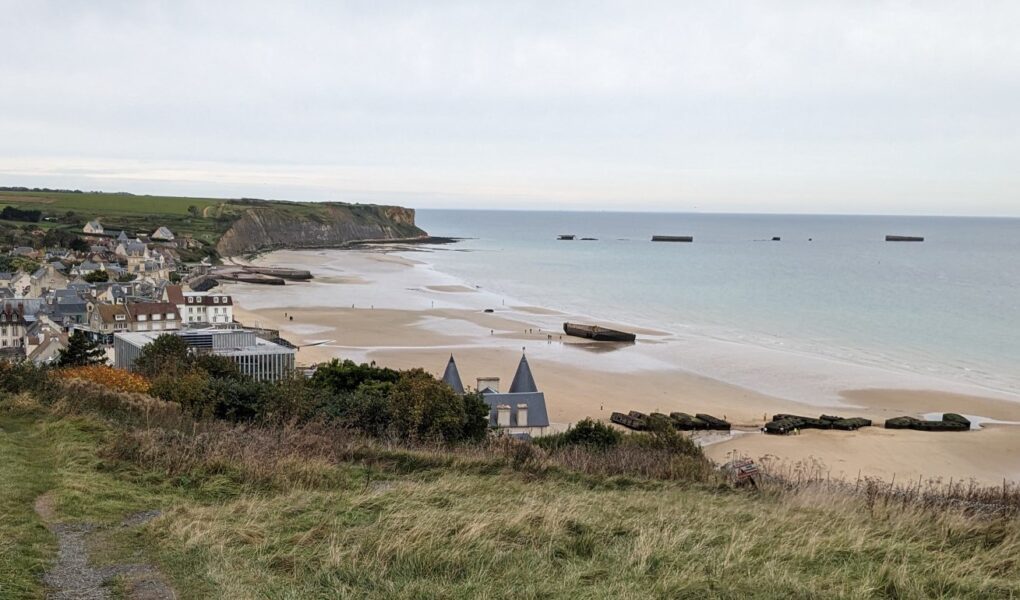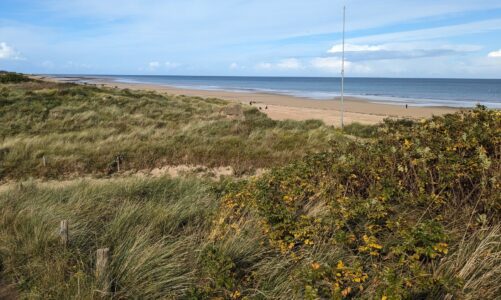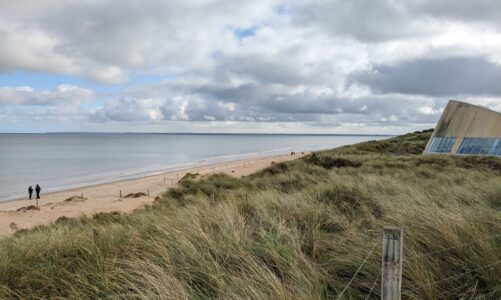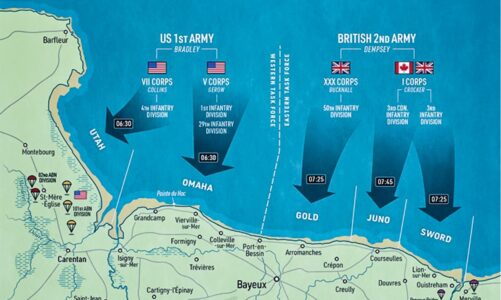Gold Beach was one of the five designated landing areas for the Allied invasion of German-occupied France during the D-Day landings on the 6th June 1944, assigned to units of the British 50th (Northumbrian) Infantry Division. The main objectives of the troops landing at Gold Beach were to seize the town of Bayeux, the Caen-Bayeux road, and the port of Arromanches with the aim of linking up with the Americans landing at Omaha Beach to the west. The forces were also tasked with linking up with Canadian forces landing at Juno Beach to the east.
The British landings began with squads of frogmen, tasked with removing underwater obstacles. They were followed by what was known as the ‘funnies’, tanks that had been modified to clear minefields as they went. The landing on Gold Beach was one of the more successful of the D-Day landings. By midnight on 6th June, neither Bayeux nor Port-en-Bessin had been taken. However, the French Resistance had taken over Bayeux. To the east, Rommel’s nightmare had been realised, a continuous British-Canadian beachhead, 12 miles across and up to 6 miles deep.
On D-Day at Gold Beach, the British Army lost around 1,020 casualties, including around 350 killed. In the initial assault, 400 British soldiers were killed, wounded, taken prisoner or missing. The total casualties, from all units involved in operations at Gold, were in the region of 1,000–1,100 casualties
The Strategic Importance of Arromanches
Arromanches was chosen as the site for one of two artificial harbours, known as Mulberry harbours, that were built by the British to support the D-Day landings on June 6, 19442. These harbours were designed to facilitate the rapid offloading of soldiers, vehicles, and supplies onto the beaches.
The harbour at Arromanches, known as Mulberry B, was a marvel of military engineering at that time. It was constructed in Britain, towed across the English Channel in sections, and assembled off the coast of Arromanches. Despite a severe storm on the 19th June that destroyed the American harbour at Omaha Beach (Mulberry A), Mulberry B suffered only minor damage and was quickly repaired by the Royal Engineers. It became one of the main offloading areas for Allied troops and supplies until permanent harbours could be repaired at Cherbourg, Anvers, and elsewhere.
The remains of Mulberry B can still be seen today, serving as a poignant reminder of the strategic brilliance and engineering prowess that contributed to the success of the D-Day landings




















